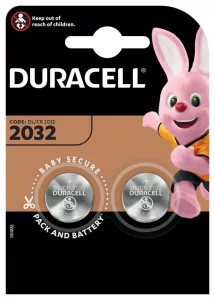
My test article
my title 1 Lorem ipsum dolor sit amet, consectetur adipiscing elit. Ut elit tellus, luctus nec ullamcorper mattis, pulvinar dapibus leo.g elit. Ut elit tellus,
There are several different battery formats, each designed to meet specific needs in terms of size, power and capacity. Here’s an overview of the main battery formats and their uses.
AA batteries, also known as LR6, are the most common and are used in a multitude of household appliances such as remote controls, clocks, toys and some small electronic devices. They are approximately 50.5 mm long and 14.5 mm in diameter. This format is widely used because of its balance between compact size and energy capacity.
AAA, or LR03, batteries are smaller than AA batteries and are often used in devices requiring less power or where compactness is essential, such as TV remote controls, wireless mice or certain medical devices. They are approximately 44.5 mm long and 10.5 mm in diameter. Their small size means they have a more limited capacity than AA batteries.
C, or LR14, batteries are larger and offer more capacity than AA and AAA batteries. They are often used in devices requiring more constant and prolonged energy, such as large flashlights, motorized toys or certain audio devices. They are approximately 50 mm long and 26 mm in diameter.
Even larger, D, or LR20, batteries are designed for high-power consumption devices such as radios, large flashlights and certain medical equipment. With a length of 61.5 mm and a diameter of 34.2 mm, they offer significant energy capacity, enabling prolonged use in power-hungry devices.
9V batteries, or 6LR61 batteries, can be identified by their rectangular shape, and are used in devices requiring relatively high voltage, such as smoke detectors, certain electronic toys and microphones. They measure approximately 48.5 mm in length, 26.5 mm in width and 17.5 mm in depth.
Button cells, or lithium batteries, are small and flat. They are often used in watches, calculators, hearing aids and portable electronic devices. There are several sizes of button cell, but the most common are CR2032 and CR2025, respectively 20 mm in diameter and 3.2 mm and 2.5 mm thick.
The above-mentioned formats are also available in rechargeable versions. These batteries generally use technologies such as nickel-metal hydride (NiMH) or lithium-ion (Li-ion), and can be recharged several hundred times before losing their effectiveness. Although more expensive to buy, they are more environmentally friendly in the long term and ideal for frequently-used devices.
There are also specific batteries for very specific uses, such as 18650 batteries, often used in more powerful electronic devices like laptops or powerful LED lights. They are cylindrical in shape, measuring around 65 mm in length and 18 mm in diameter, and are often based on lithium-ion technology.
The choice of battery format depends primarily on the energy requirements of the device and the desired duration of use. Smaller sizes, such as AAA, are practical for lightweight, low-power devices, while larger sizes such as D are essential for devices requiring longer-lasting energy. The advent of rechargeable batteries has also changed the way we consume, offering a more sustainable and economical alternative in the long term.

my title 1 Lorem ipsum dolor sit amet, consectetur adipiscing elit. Ut elit tellus, luctus nec ullamcorper mattis, pulvinar dapibus leo.g elit. Ut elit tellus,

Choose a high grammage (250 to 300 g/m²). Check the maximum thickness or grammage recommended by your printer manufacturer and never exceed it, otherwise paper jams may occur.

A button cell, or watch cell, is a small electric battery, generally cylindrical in shape and button-like in size.
Inscription newsletter
Newsletter subscription